Yes, The Original King Kong From 1933 Still Holds Up | Game Rant
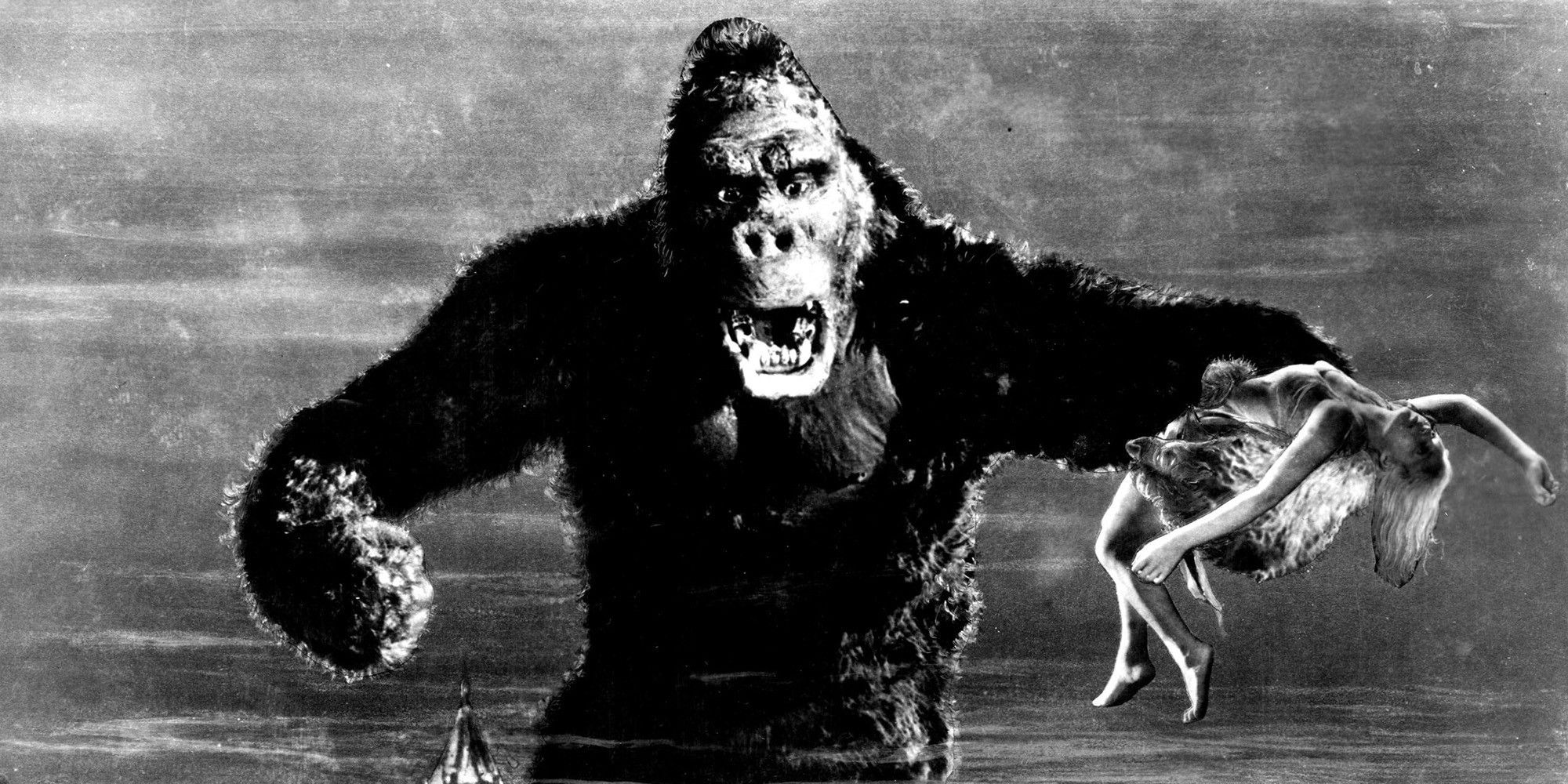
Back in 1933 a film crew made a startling discovery. American Air Force officer turned film producer Merian C. Cooper’s long-gestating “giant ape” picture was unleashed on audiences, and nearly 90 years later, King Kong looms large over film history. King Kong was not the first, nor the last, film to feature gigantic creatures. Yet the movie has earned its self-endowed reputation as “The Eighth Wonder of the World,” spawning an iconic main monster that has persevered through imitators, cartoons, reboots (not to mention inspiring Donkey Kong’s name) and embedded itself into worldwide popular-consciousness.
With the upcoming Godzilla vs. Kong, it raises the question of whether the original film can compare with modern spectacle, whether overexposure to King Kong has disillusioned audiences from seeing his first incarnation with fresh eyes. Yet the 1933 RKO picture remains a colossal achievement, being an essential piece of film history that crystallizes several cinematic trends and is still able to thrills audiences with its sublime symbolic potential.
The first group to capture King Kong are not shadowy government agencies, nor mad scientists, but filmmakers. King Kong opens with daring director Carl Denham (Robert Armstrong) setting out to make another “jungle picture" traveling to exotic locations to capture authentic adventurous footage. Although the studios want him to hire a “pretty face” to accompany his films; not easy with his secretive shoots and rough all-male crew. So Carl plucks the starving girl Ann Darrow (Fay Wray) from the Depression-era streets of New York and sets sail for the mysterious Skull Island.
Along the fringes, King Kong contains some meta-commentary about the film business, including the sense of adventure audiences found from escapist films. On the voyage, Carl conducts a screen-test of Ann, directing her to be paralyzed by fear of some humongous menace out of the camera’s sight. This is thrilling foreshadowing of what will end up happening in King Kong, but it's also commentary on the nature of such monster movies; actresses screaming at empty air.
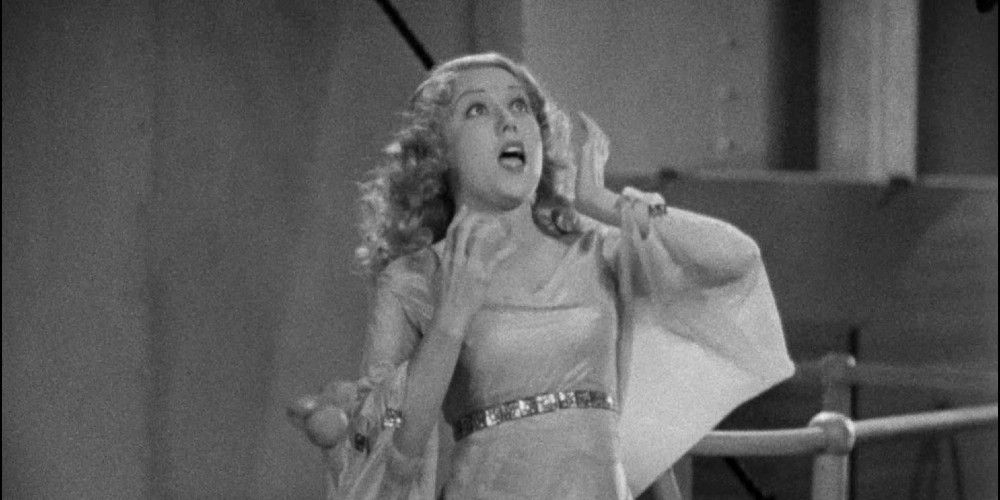
Carl Denham can be easily read as a stand-in for King Kong’s co-director, Merian C. Cooper. Cooper had long been fascinated by adventure stories of wild, exotic animals, particularly the adventures of anthropologist Paul Du Chaillu. As Cooper became involved in the film industry, he leaned towards such quasi-colonial “jungle films” with his producing partner (and King Kong’s other director) Ernest Schoedsack. Together they made “documentary” pictures about foreign tribes and habitats, with Grass (1925) and Chang (1927) functioning like a traveling zoo. They were also fake.
The subjects of these documentaries were real, and Cooper (like Denham in King Kong) put himself in direct danger with the live animals they handled. But the directors recreated scenes and inserted the narrative elements themselves, straying far from the “detached objectivity” of documentaries. The racist undertones of such cinematic colonization also cannot be ignored, with these falsified accounts of foreign lands meant to shock and excite Western audiences.
King Kong carries much of the same subtext as these documentaries, but it has the important distinction of being explicitly fictional. It fits in the tradition of post-colonial works that take the “undiscovered country” angle to the extreme, populating them not with “believable” foreign tribes, but extraordinary prehistoric creatures, such as The Lost World (1925) featuring an island of dinosaurs way before Jurassic Park. Carl Denham in King Kong is still a “documentarian” who grafts his narratives onto genuine footage, but with this film, Cooper and Schoedsack took the leap into completely fantastical showmanship.
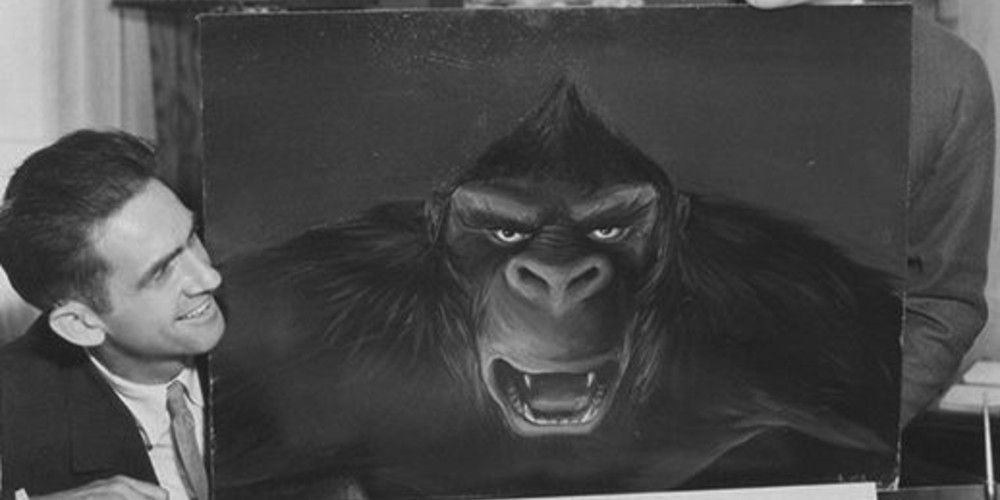
Of course, the racial undertones are still buried in King Kong, which has the white crew encounter the Skull Island natives and discover the enormous ape King Kong that they worship. But this subtext only makes King Kong continually fascinating to reinterpret. There’s a scene in Quentin Tarantino’s Inglorious Basterds where Major Hellstrom (August Diehl) plays a guessing game that draws direct parallels between King Kong and African-American slaves. Now, did Cooper and RKO intend to say anything about slavery and colonialism? Probably not. But from the legacy of its colonialist adventures, King Kong comes with such symbolism built-in. It means King Kong can be viewed as both a surface-level monster movie and as an allegorical tale.
It helps that, given the film’s meaning is so vague, King Kong can be interpreted as favorably anti-colonialist. Especially as Kong comes away as the sympathetic star of the film, a tragic figure infatuated by Ann and ripped from his homeland before being put on gaudy display in Manhattan and destroyed by breaking free. King Kong takes 40 minutes to build up the beast, but when he arrives, it's all viewers can focus on. And with his big white eyes and wide goofy grin, he cannot help but be endearing. While modern CGI or 3D animation would smooth out Kong’s idiosyncrasies and behavior, the janky Claymation and puppetry allow him to move in such deliberate and fascinating ways. Take for example after Kong fights and kills a T-Rex, he plays around with the corpse’s jaw, as if unsure about what he’s just done.
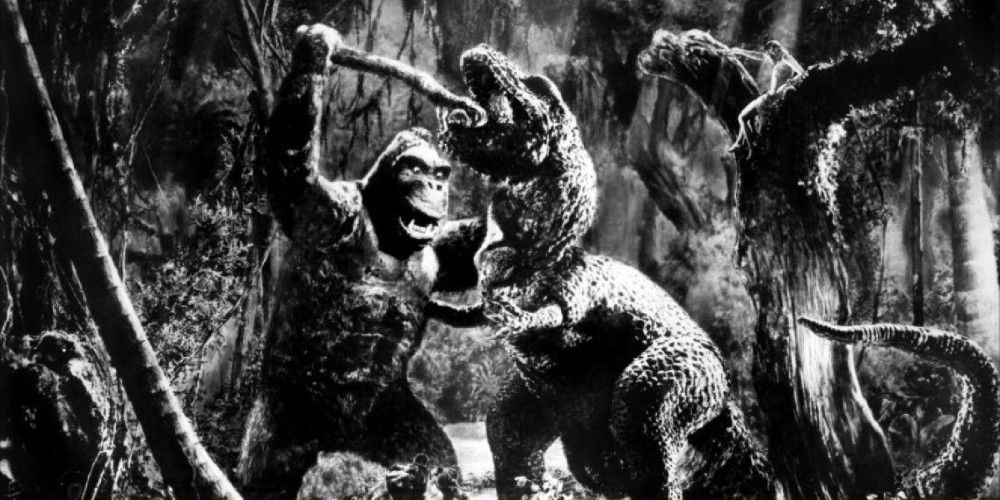
Kong is not, by today’s standards, realistic. In fact, Kong changes size throughout the film, alternating between being 18 feet on Skull Island and sometimes 60 feet in Manhattan. But Cooper explained in an interview that he “felt confident that if the scenes moved with excitement and beauty, the audience would accept any height that fitted into the scene.” And he was right as, despite his artificiality, viewers still believe in Kong. From this pile of animal furs and metal skeletons, a startling authentic caricature emerges.
King Kong is still a landmark in special effects, helmed by master effects artist William O’Brien. Several techniques were combined together for the film, including painstaking stop-motion animation for Kong and the dinosaurs through manipulating miniatures by hand. The 2-minute fight between Kong and the T-Rex took about 7 weeks to film. An 18-foot model of Kong was used for close-ups of his head and torso, which took three technicians to operate. The most impressive part was having these special effects interact with the live-action actors, which was achieved through a combination of overlaying film-reels, matte paintings, and rear-projected backdrops.
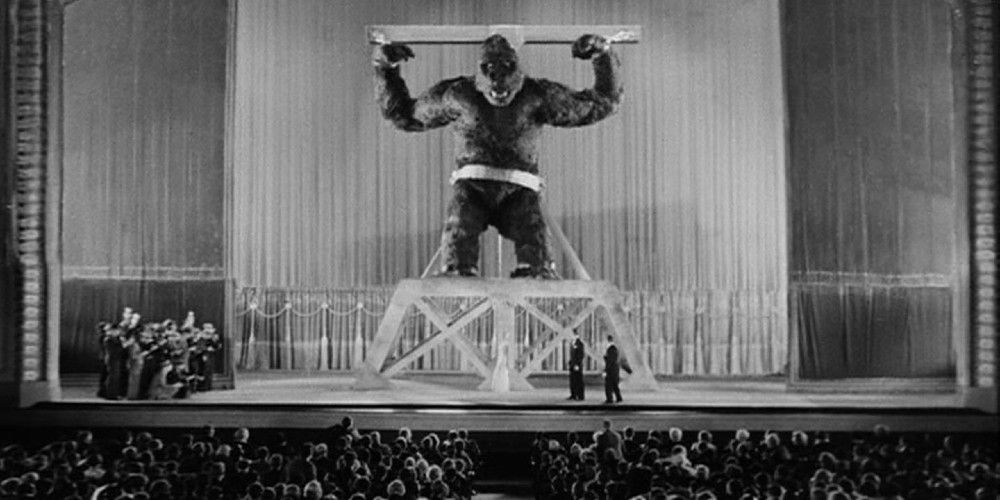
Such special effects remain a remarkable accomplishment, but they also prove effective in the heat of the moment. King Kong’s middle stretch on Skull Island, where it revels in the adrenaline-rush of the humans being utterly overwhelmed by the monsters, remains a thrilling experience. Sound technology had only been around for 5 years when King Kong was released, and it uses its soundtrack to guide the emotion, as well as convey the terror through the piercing screams of the humans. Fay Wray is playing a classical damsel-in-distress in King Kong, but she imbues Ann with charming enthusiasm, and (as her screen-test shows) her piercing wale perfected the role of “scream queen.”
King Kong landed in the early days of the Great Depression, when Americans were inundated with banal realistic misery. So, King Kong became the bridge between old-fashioned colonial exploration and modern Hollywood spectacle, bringing both fear and thrills to audiences who wanted to be shocked out of their reality. In a very literal way, King Kong brought the ancient and modern worlds into contact, its innovative special effects connecting the “fantastical” and the “real.” King Kong’s legacy is secured, and through its ability to mingle B-movie monsters with an underlying sense of tragedy, the 1933 film still stands tall.

Post a Comment